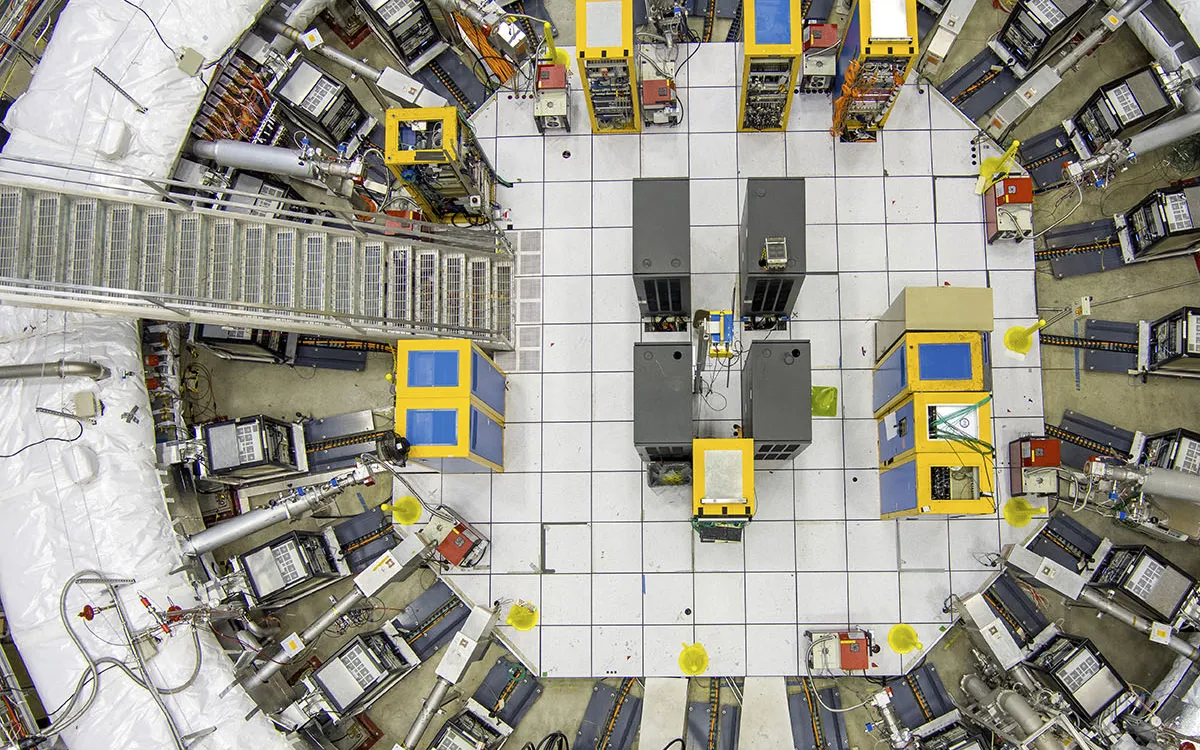
Scientists at the Muon g-2 experiment, conducted by the U.S. Department of Energy’s Fermi National Accelerator Laboratory, have recently released their third and final measurement of the muon magnetic anomaly. This measurement is a crucial aspect of the experiment, which is named after the g-2 phenomenon it investigates. The final result aligns with their previous findings from 2021 and 2023 but boasts an impressive precision of 127 parts-per-billion, surpassing the original goal of 140 parts-per-billion.
The anomalous magnetic moment of the muon, or g–2, plays an essential role in testing the Standard Model of particle physics. Regina Rameika, Associate Director for the Office of High Energy Physics at the U.S. Department of Energy, expressed her excitement, stating, “This is an exciting result, and it is great to see an experiment come to a definitive end with a precision measurement.” This long-awaited achievement is expected to remain the most precise measurement of the muon magnetic anomaly globally for years to come.
Despite recent challenges regarding theoretical predictions that have diminished evidence for new physics within the context of muon g-2, this latest result provides a rigorous benchmark for proposed extensions of the Standard Model. Peter Winter, a physicist at Argonne National Laboratory and co-spokesperson for the Muon g-2 collaboration, remarked, “This is a very exciting moment because we not only achieved our goals but exceeded them, which is not very easy for these precision measurements.”
Lawrence Gibbons, a professor at Cornell University and analysis co-coordinator for the experiment, reflected on the historical significance of g-2: “For over a century, g-2 has been teaching us a lot about the nature of nature.” He added that it is thrilling to contribute a precise measurement that is likely to stand the test of time.
The Muon g-2 experiment investigates the behavior of the muon, a fundamental particle similar to the electron but approximately 200 times more massive. Muons possess a quantum mechanical property known as spin, which can be likened to a tiny internal magnet. Under an external magnetic field, this internal magnet exhibits a wobbling motion, or precession, akin to a spinning top. The rate of this precession is influenced by the muon's properties, quantified by a number known as the g-factor.
Almost a century ago, the theoretical value of g was predicted to be 2. However, experimental measurements indicated a slight deviation from this value, leading to the concept of the muon magnetic anomaly, denoted as aμ, calculated using the formula (g-2)/2. The experiment's name stems from this relationship.
The muon magnetic anomaly encapsulates the effects of all particles described by the Standard Model. Theoretical physicists can calculate these contributions with remarkable precision. However, earlier measurements conducted at Brookhaven National Laboratory in the late 1990s and early 2000s suggested a potential discrepancy with then-current theoretical predictions. Such discrepancies often signal the existence of new physics.
In response to these findings, the Muon g-2 experiment underwent significant upgrades. In 2013, Brookhaven’s magnetic storage ring was transferred to Fermilab in Illinois. Following years of enhancements, the Fermilab Muon g-2 experiment officially commenced on May 31, 2017. Meanwhile, an international collaboration known as the Muon g-2 Theory Initiative was established to refine theoretical calculations.
The most recent experimental value of the muon’s magnetic moment from the Fermilab experiment is as follows: aμ = (g-2)/2 (muon, experiment) = 0.001 165 920 705 ± 0.000 000 000 114 (stat.) ± 0.000 000 000 091 (syst.). This final measurement is based on the analysis of data collected over the last three years (2021-2023) and incorporates previously published datasets. This effort more than tripled the dataset size used in the 2023 results, allowing the collaboration to achieve their precision goal set in 2012.
As the Muon g-2 collaboration concluded its main analysis, there remains a wealth of data to explore. Future efforts will focus on measuring the muon’s electric dipole moment and testing fundamental symmetries in physics, such as charge, parity, and time-reversal symmetry.
The collaboration comprises nearly 176 scientists from 34 institutions across seven countries. Marco Incagli, a physicist with the Italian National Institute for Nuclear Physics, emphasized the importance of the diverse expertise within the team. He noted, “This experiment is quite peculiar because it has very different ingredients in it.”
With the primary analysis complete, the scientists are eager to shift their focus to new physics explorations. As Peter Winter stated, “I think it will be a textbook experiment that will be a long-lasting reference for many future decades to come.” The Muon g-2 experiment not only advances our understanding of particle physics but also sets the stage for future discoveries.